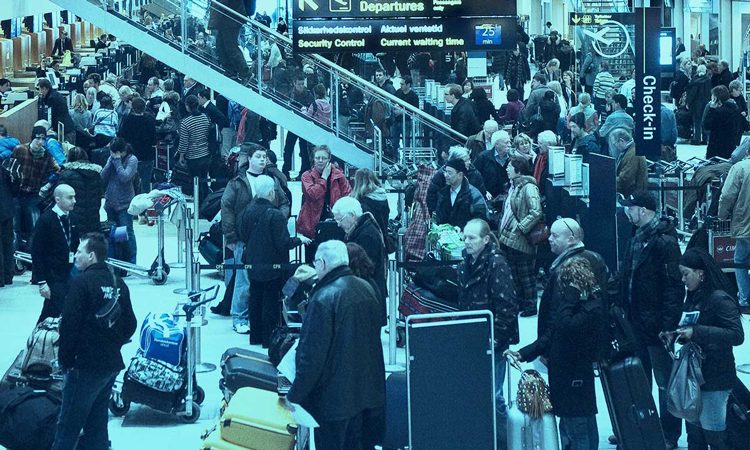How airport-wide flow management helps solve capacity constraints
- Like
- Digg
- Del
- Tumblr
- VKontakte
- Buffer
- Love This
- Odnoklassniki
- Meneame
- Blogger
- Amazon
- Yahoo Mail
- Gmail
- AOL
- Newsvine
- HackerNews
- Evernote
- MySpace
- Mail.ru
- Viadeo
- Line
- Comments
- Yummly
- SMS
- Viber
- Telegram
- Subscribe
- Skype
- Facebook Messenger
- Kakao
- LiveJournal
- Yammer
- Edgar
- Fintel
- Mix
- Instapaper
- Copy Link
Posted: 16 March 2020 | Veovo | No comments yet
Globally, airports’ capacity is under strain, and operators are focused on maximising existing and growing capacity. With space at a premium and passenger safety paramount, capacity planning requires intelligent forecasting. With combined end-to-end passenger flow and flight data insights, future-planning is more straightforward, transparent, and accurate.


Growing pains
With growing passenger numbers increasing the risk of airport overcrowding, delays, lost revenue and even safety breaches, many airports are now racing to build new infrastructure and expand their capacity to match demand.
Inadequate terminal capacity can have a significant impact on everything, from flight schedules to operations, and even airlines reducing or eliminating flights to specific destinations. It can lead to increased flight costs, reduced trade, tourism and investment levels, and increased competition between airlines for apron space.
While airports everywhere are planning expansions, the reality is that major infrastructure upgrades can take years to finalise. In the meantime, airports must find ways to maximise existing capacity and find them fast.
To optimise current capacity and plan for future expansion projects, operators need to be able to accurately measure and predict how people move throughout and use the airport.
Accurate growth forecasting, in turn, helps optimise capacity use, while ensuring expansion plans are adequate and comply with building, safety and environmental impact regulations.
Capacity vs safety
Adequate capacity is critical for a safe, efficient and competitive aviation system. That said, no matter how much actual space is available, any weak link in the chain can cause ripple effects through the whole ecosystem. It is, therefore, essential to view and understand the terminal complex as a whole.
This includes considering whether increased traveller numbers are pushing safety limits. Has the maximum allowable occupancy been reached? Are there enough fire exits and security personnel? Is crowding causing people to occupy spaces not designed for it, like corridors? And, in an emergency, will safe evacuation be possible? Any of these could result in serious safety hazards.
Plan, predict, perfect
Understanding how people move is critical to assessing capacity and forecasting the effects of delays or disruptions. Effective expansion planning relies on forecasting to predict traveller numbers at any given time.
Even so, the best-laid plans can quickly become obsolete as flights deviate from their scheduled arrival and departure times, creating a domino effect of disruption. If airports can foresee the events that will affect terminal operations, they will be able to adjust plans accordingly. But how?
Historical data analysis has long been used to bring a measure of forecasting to operations. Forecasting tools have traditionally relied on input from an airport’s operational database (AODB), combined with assumptions or generalised measurements for passenger behaviour.
However, this doesn’t tell us much about passengers’ journeys.
The people factor
Many airports only focus on improving efficiency at passenger processing points. However, to improve passenger flow, the whole terminal needs to be taken into account.
People will naturally occupy whatever space is available, even when it is not intended for that purpose. This leads to flow disruptions, bottlenecks and potentially hazardous situations, resulting in traveller discomfort, complaints and bad reviews.
Using cohesive flow insight gathered from sensors across the terminal, meshed with flight info and other data sources, offers a deeper understanding of pre-flight passenger behaviour. This enables more accurate flow information for predictive modelling, allowing airports to plan and act with confidence.
Airports gain real-time and predicted occupancy and movement insights for individual processes and areas, and the terminal as a whole. This can help airports to even out traveller distribution, reducing the risk of crowding. It also provides the opportunity to share live wait-time information to keep passengers informed.
Making data count
To resolve congestion, in the long run, airport operators must view all constraining elements as part of the larger airport system. Solving congestion in just one area may result in the problem merely shifting to another. Only by considering the airport as a whole can operators determine the most appropriate and sustainable way of combating congestion.
By using end-to-end flow management, operators can discover where people move and spend their time within the airport and how this differs from flight to flight.
With rich insights into passenger flow in and around the airport, not only can operators solve the capacity issues they face today, but they can also use the predictive data to confidently plan future expansion projects, smoothing the passenger experience for years to come.
Related topics
Capacity, Passenger experience and seamless travel, Passenger volumes, Terminal operations


















